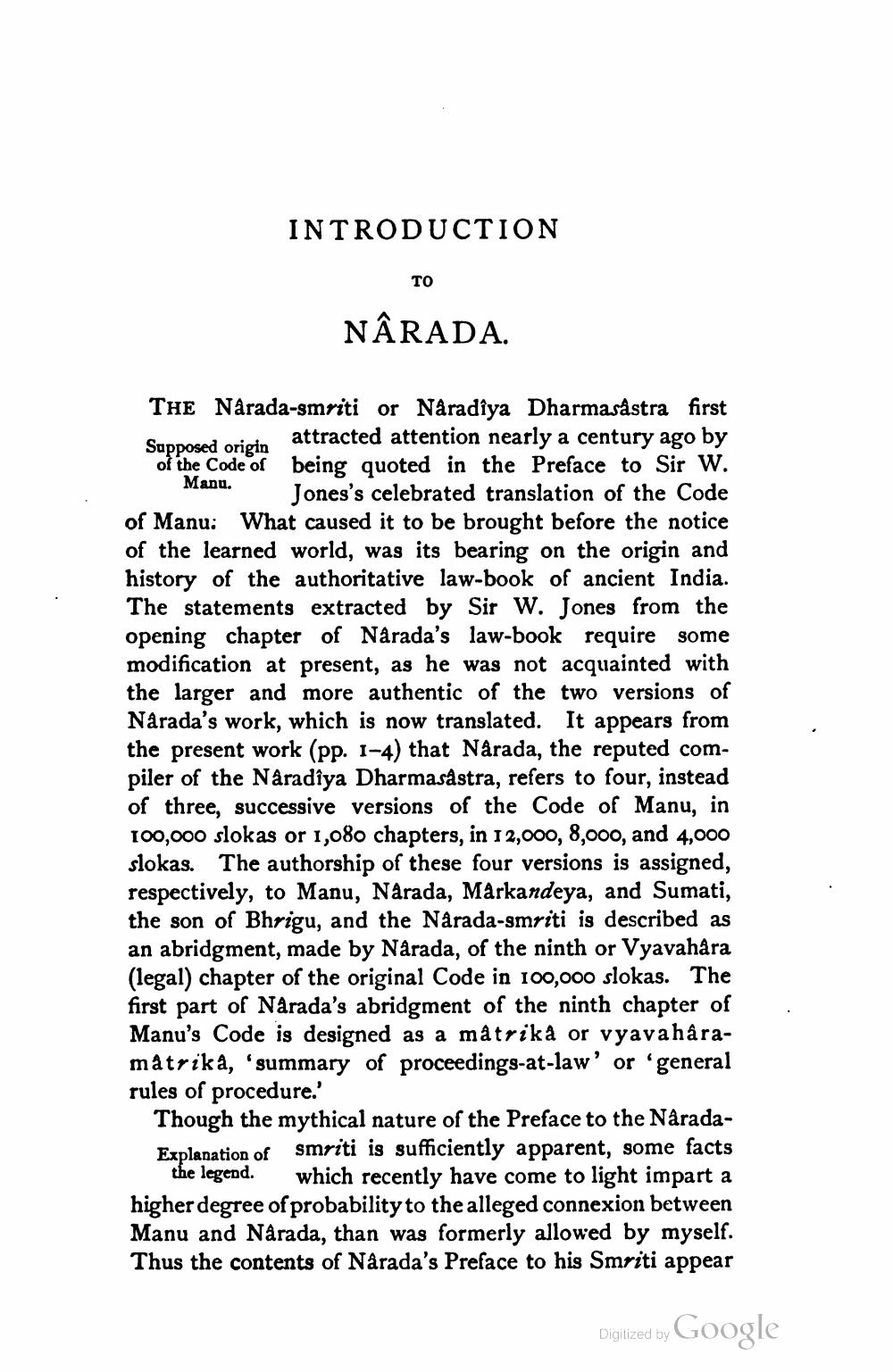________________
INTRODUCTION
TO
NÂRADA.
THE Nárada-smriti or Naradîya Dharmasastra first
icin attracted attention nearly a century ago by Supposed original of the Code of being quoted in the Preface to Sir W. Manu.
Jones's celebrated translation of the Code of Manu: What caused it to be brought before the notice of the learned world, was its bearing on the origin and history of the authoritative law-book of ancient India. The statements extracted by Sir W. Jones from the opening chapter of Narada's law-book require some modification at present, as he was not acquainted with the larger and more authentic of the two versions of Narada's work, which is now translated. It appears from the present work (pp. 1-4) that Narada, the reputed compiler of the Náradîya Dharmasastra, refers to four, instead of three, successive versions of the Code of Manu, in 100,000 slokas or 1,080 chapters, in 12,000, 8,000, and 4,000 slokas. The authorship of these four versions is assigned, respectively, to Manu, Narada, Markandeya, and Sumati, the son of Bhrigu, and the Nárada-smriti is described as an abridgment, made by Narada, of the ninth or Vyavahara (legal) chapter of the original Code in 100,000 slokas. The first part of Narada's abridgment of the ninth chapter of Manu's Code is designed as a matrikå or vyava hâramatrika, summary of proceedings-at-law' or 'general rules of procedure.
Though the mythical nature of the Preface to the NaradaExplanation of Smriti is sufficiently apparent, some facts
the legend. which recently have come to light impart a higher degree of probability to the alleged connexion between Manu and Narada, than was formerly allowed by myself. Thus the contents of Nárada's Preface to his Smriti appear
Digitized by Google




